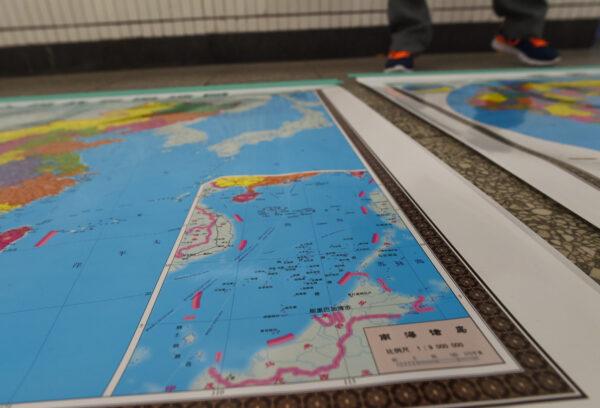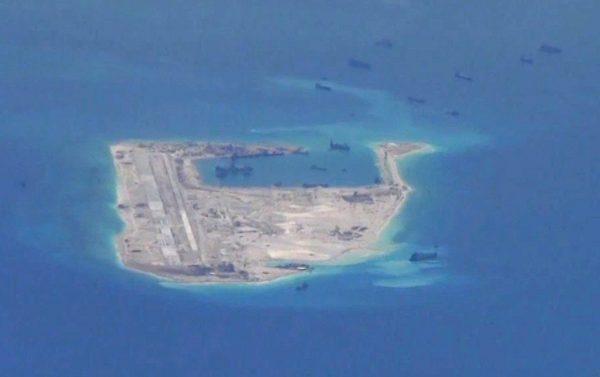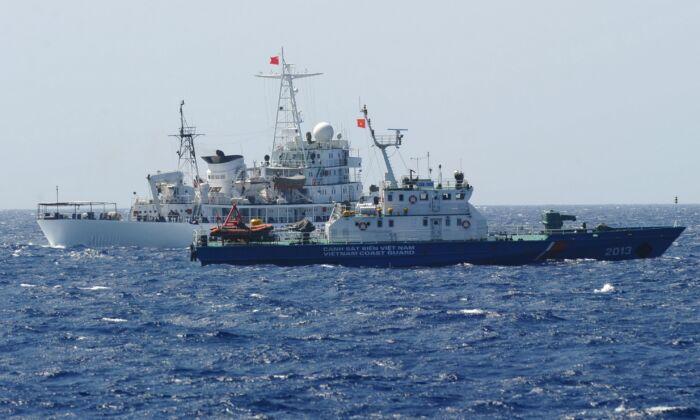Beginning on September 1, China will require foreign vessels to report detailed information upon entering into the ocean areas the regime claims as its territory. An expert warns of the rising possibility of clashes in contested waters in the South China Sea.
The regime says it has a historical right to a large swath of the South China Sea, vaguely demarcated by the “9-dash line” China published on a map to indicate the area to which it laid claim. Neighboring countries do not recognize these claims.
China’s maritime safety authorities said that foreign vessels should report the details of ships, estimated time of arrival and departure, current position, and other information before passing through these waters. If a ships’ automatic identification system is not working properly, authorities will require follow-up reports every two hours until it leaves the area, according to a statement released on Aug. 27.

The new regulation puts these demands on a wide range of ships. The list includes submersibles, nuclear vessels, ships carrying radioactive materials, and ships carrying bulk oil, chemicals, liquefied gas, and other toxic and harmful substances.
China’s Maritime Safety Administration also noted that any other vessels that may “endanger the maritime traffic safety” of the regime’s claims should report upon arrival.
Su Tzu-yun, a Taiwan-based expert, told The Epoch Times the new regulation could heighten tensions in the disputed areas, especially in the South China Sea, as the regime may extend the law to artificial reefs.
The Chinese regime claimed sovereignty over the largest portion of two uninhabited island chains, Spratly and Paracel, in the South China Sea. However, other governments, Vietnam, the Philippines, Taiwan, Malaysia, and Brunei, dispute those claims.
The Hague’s Permanent Court of Arbitration invalidated Beijing’s claim in 2016, saying that China violated the UNCLOS. Nevertheless, the Chinese regime has backed its claims with island-building and military patrols. Since 2013, Beijing has been building artificial islands across the region and has established military installations on the islands.
Su said the regime’s two maritime laws, the Coast Guard Law and the Maritime Traffic Safety Law, could make the water region more volatile.
“Beijing will also apply the Maritime Traffic Safety Law to the artificial islands after September 1. So when [vessels of] other countries sailed within 12 miles of Chinese-claimed artificial reefs … a clash may break out,” said Su, director of the Defense Strategy and Resources Division of the Institute for National Defense and Security Research in Taiwan.

According to UNCLOS, a country’s territorial waters are defined as 12 nautical miles from its coastline. All ships, whether civilian or military, enjoy the right of innocent passage through other states’ territorial seas if they don’t threaten the security of the state.




